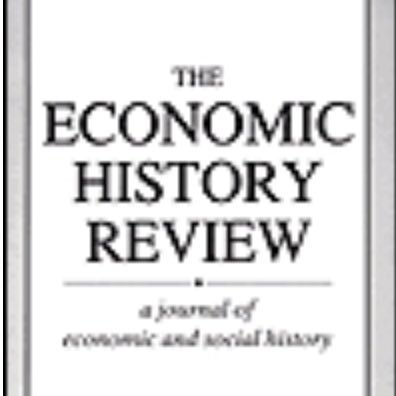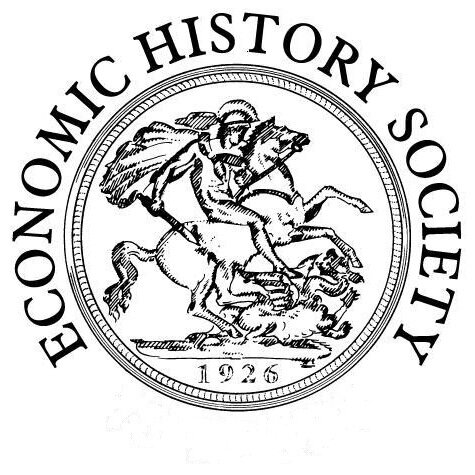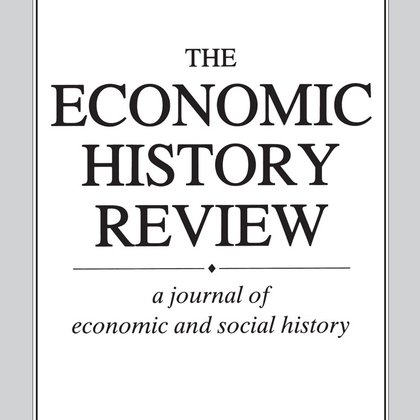
Economic History Review
@EcHistSocReview
Followers
5K
Following
528
Media
11
Statuses
889
The official account of The Economic History Review. https://t.co/XQ3hbElXh0
Joined April 2019
The Economic History Review now has its account at the other place! Be sure to follow @echistsocreview.bsky.social for updates on the latest peer-reviewed advanced research on all aspects of economic and social history from around the world and from all periods.
0
0
1
This article analyses the determinants of wealth inequality at the local level in the Venetian Republic 1400–1800 and explores the distributional effects of the terrible 1629–30 plague. It finds that increasing regressive taxation was a major source of inequality growth.
1
2
2
Now on Early View: 'Wealth inequality and epidemics in the Republic of Venice (1400–1800)'. By Guido Alfani, Matteo Di Tullio & Mattia Fochesato. @guido_alfani @DondenaCentre @Unibocconi @stone_lis @cage_warwick @unipv
https://t.co/MoFGZnFtBY
onlinelibrary.wiley.com
This article analyses wealth inequality in the Republic of Venice during 1400–1800. The availability of a large database of homogeneous inequality measurements allows us to produce the most in-depth...
1
6
18
Examining the role of religion in Spain’s family allowances, it shows how Catholic advocacy shaped policies but imposed structural limits due to their redistributive preferences. Expansion was further hindered by Falange competition and the dictatorship’s resistance to tax reform
0
0
1
Now on Early View: 'Religious politics and the limits of redistribution: The rise and fall of family allowances in Spain, 1926–58'. By Guillem Verd-Llabrés. @gllabverd @UICbarcelona
https://t.co/3gXkUUH4t5
onlinelibrary.wiley.com
After the Second World War, family allowances became a cornerstone of social spending in western Europe. Whilst religion is often highlighted as a driver of this policy, the role of political...
1
3
7
It uses a diff-in-diff strategy, highlighting that telegraph connection within a prefecture pair reduced the difference in interest rate by 1.27% (6.9% of mean) Financial intermediaries engaged in long-distance remittance augmented the telegraph’s effect on cap market integration
0
0
0
Now on Early View: 'Telegraph and capital market integration: Evidence from late imperial China'. By Yu Hao & Yuxiang Wang. @PKU1898 @SWUFE1925
https://t.co/A3F1fNlQCz
onlinelibrary.wiley.com
Exploiting quasi-exogenous variations in the timing of telegraph construction, the reduction of information costs promotes capital market integration in late imperial China. Employing a difference-...
1
1
4
Upcoming CFP Deadline: 5 September. This year's @WComEHS Workshop: Women & Entrepreneurship: Agency, Experience, and Enterprise will be held at UCL, 12 December 2025. More information can be found in the QR or at:
ehs.org.uk
12/12/2025 @ All day - Annual Workshop of the Economic History Society Women’s Committee University College London Friday, 12 December 2025 Theme: Women & Entrepreneurship: Agency, Experience, and...
0
1
3
This article demonstrates the existence of a soaring demand for strategic materials in 15th century Rome, highlighting the political measures undertaken to support the supply of materiel, revealing a pragmatic stance that combined state control with private initiative.
0
0
1
Now on Early View: 'Strategic materials and state capacity in Renaissance Italy. The economic policies of ‘Roman saltpetre’ procurement'. By Fabrizio Antonio Ansani. @warmateriaIs @kingshistory
https://t.co/xiTPuZHapF
onlinelibrary.wiley.com
Demonstrating the existence of a soaring demand for strategic materials in fifteenth-century Rome, the article pioneers research in the late medieval trade in saltpetre, the irreplaceable, rare...
2
2
12
It estimates the impact of reductions in poor law spending on rural life expectancy/mortality rates. It implies 8–10% increases in mortality at ages 1–4 and 2–4 % falls in rural expectation of life at birth, consistent with the reformers’ reducing allowances for larger families
0
0
0
Now on the Long Run: 'The new poor law and the health of the population of England and Wales'. By David Green, Gabriel Mesevage, Graham Mooney & Simon Szreter. @davidrgreenuk @gfgmesevage @SimonSzreter @kclgeography @kingshistory @ihmjhu @stjohnscam
https://t.co/mCdCAxDq11
onlinelibrary.wiley.com
We estimate the impact of reductions in poor law expenditure on rural life expectancy and mortality rates in England and Wales following the 1834 Poor Law Amendment Act. Given the scale of cuts...
1
1
5
It analyses product and process innovations in Amsterdam, examining their variegated social impact in two datasets of probate inventories. It argues Middle-class decencies became cheaper during the 17th century, but without a sustained positive impact on material living standards
0
0
1
Now on Early View: 'The cost of the consumer revolution: Prices, material living standards, and real inequality in Amsterdam (1630‒1805)'. By Bas Spliet & Anne E. C. McCants. @BSpliet @UAntwerpen @SHOC_VUB @RealDMitchell
https://t.co/fNYzJhzDac
onlinelibrary.wiley.com
This article measures the cost of the early modern consumer revolution through a quantitative analysis of product and process innovations in Amsterdam and examines their variegated social impact in...
1
7
13
It draws on a weekly publication of public finance statistics, assessing the roles of monetary policy, taxation and public spending. It shows that monetary and fiscal policy shocks contributed to variation in prices and unemployment, playing a central role in two great recessions
0
0
0
Now on Early View: 'Macroeconomic policymaking in interwar Britain: A reappraisal'. By David Ronicle. @BoE_Research
https://t.co/OCyJ51SZ54
onlinelibrary.wiley.com
This paper brings together modern empirical techniques with contemporary high frequency data to fill two prominent gaps in the literature on Britain's interwar years: what were the quantitative...
1
0
6
This article examines the distributive effects of personal income taxation in Sweden, the UK, and the US during the first half of the 20th century. It shows that redistribution through income taxation increased during the period with varying intensity and mechanisms.
0
0
2
Now on Early View: 'Income taxes and redistribution in the early twentieth century'. By Sara Torregrosa-Hetland & Oriol Sabaté . @sthetland @oriol_sabate @UNavarra @LuEconHist @ubeconomics
https://t.co/U22BV0tJPZ
2
16
36







